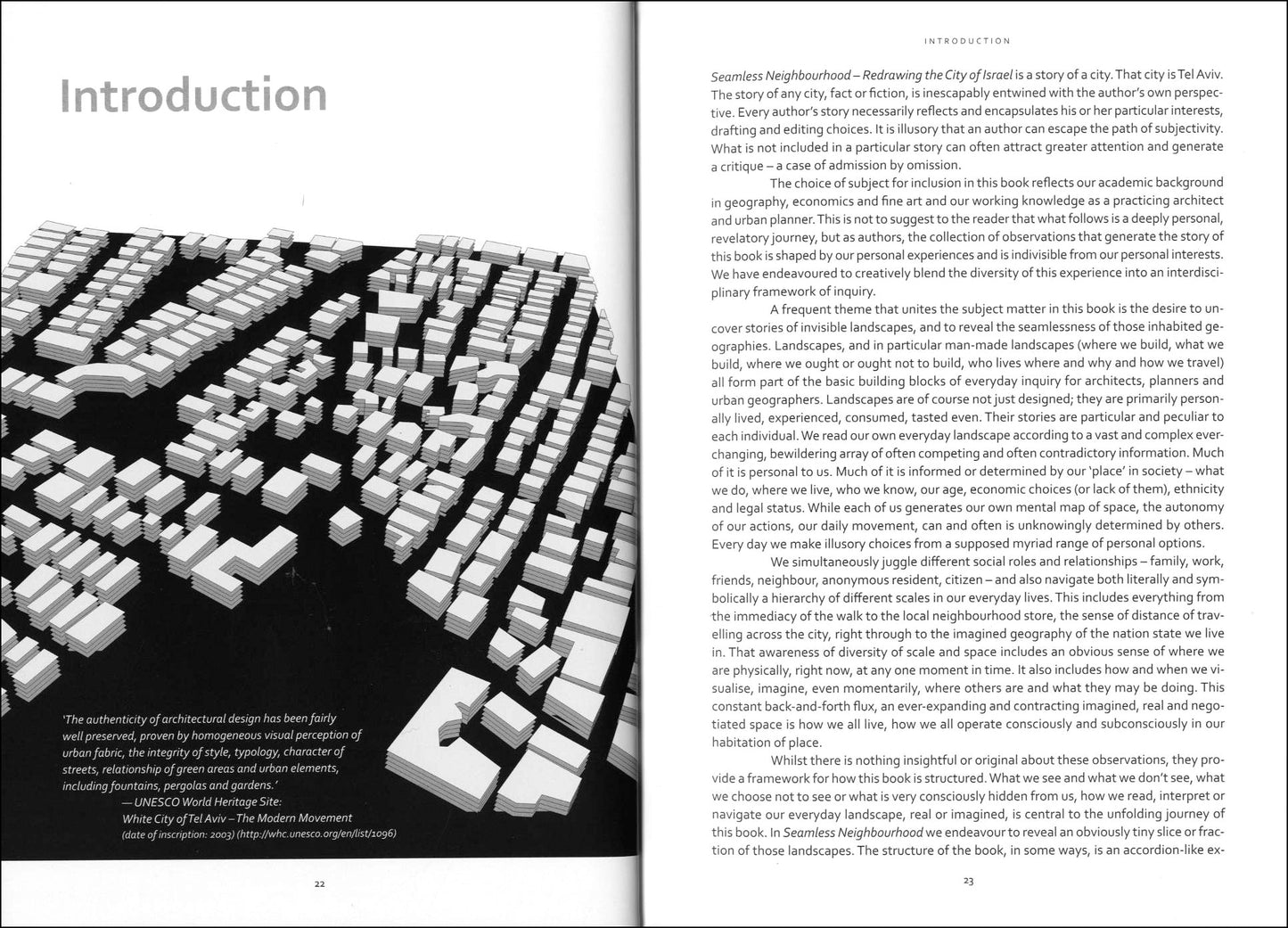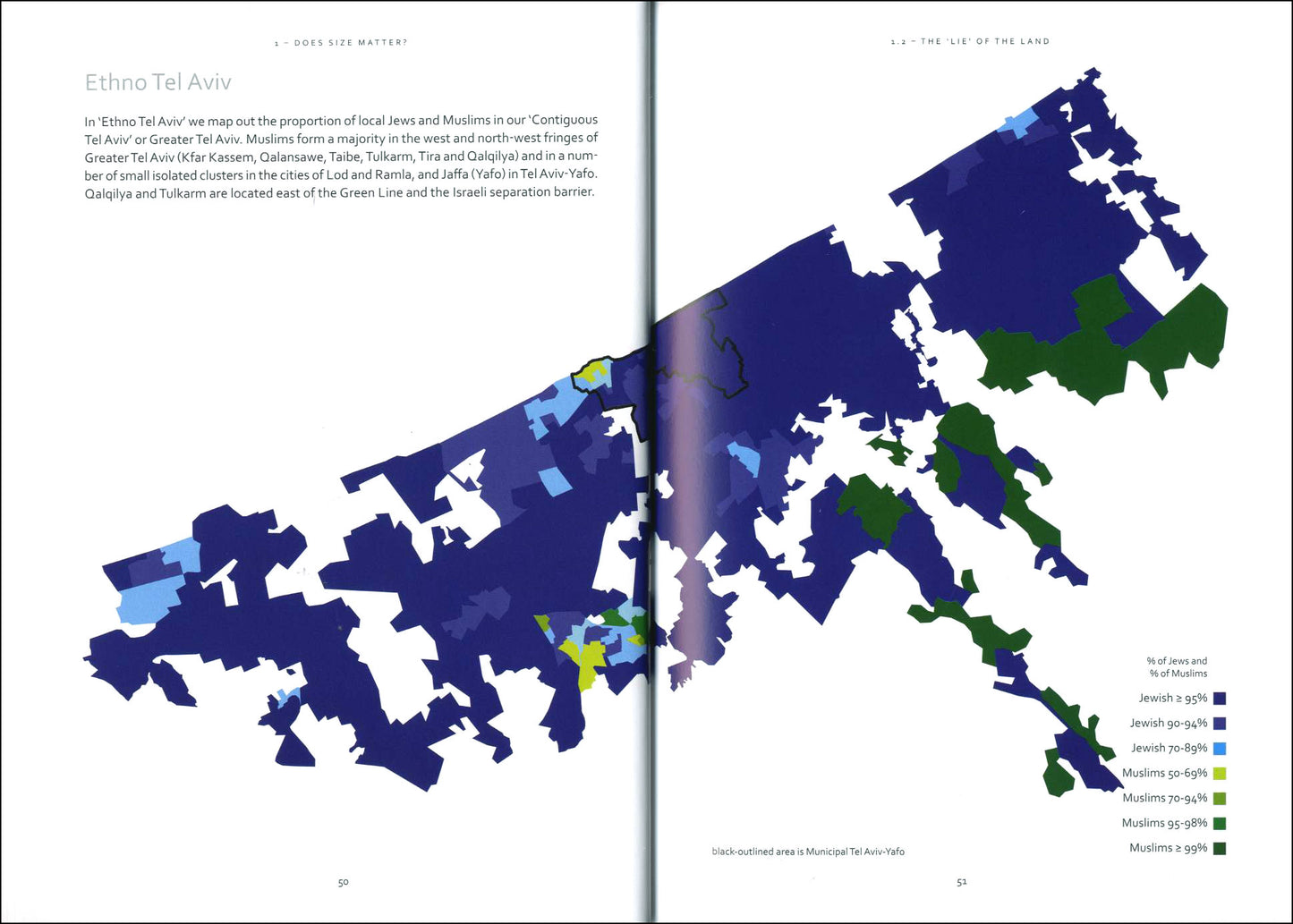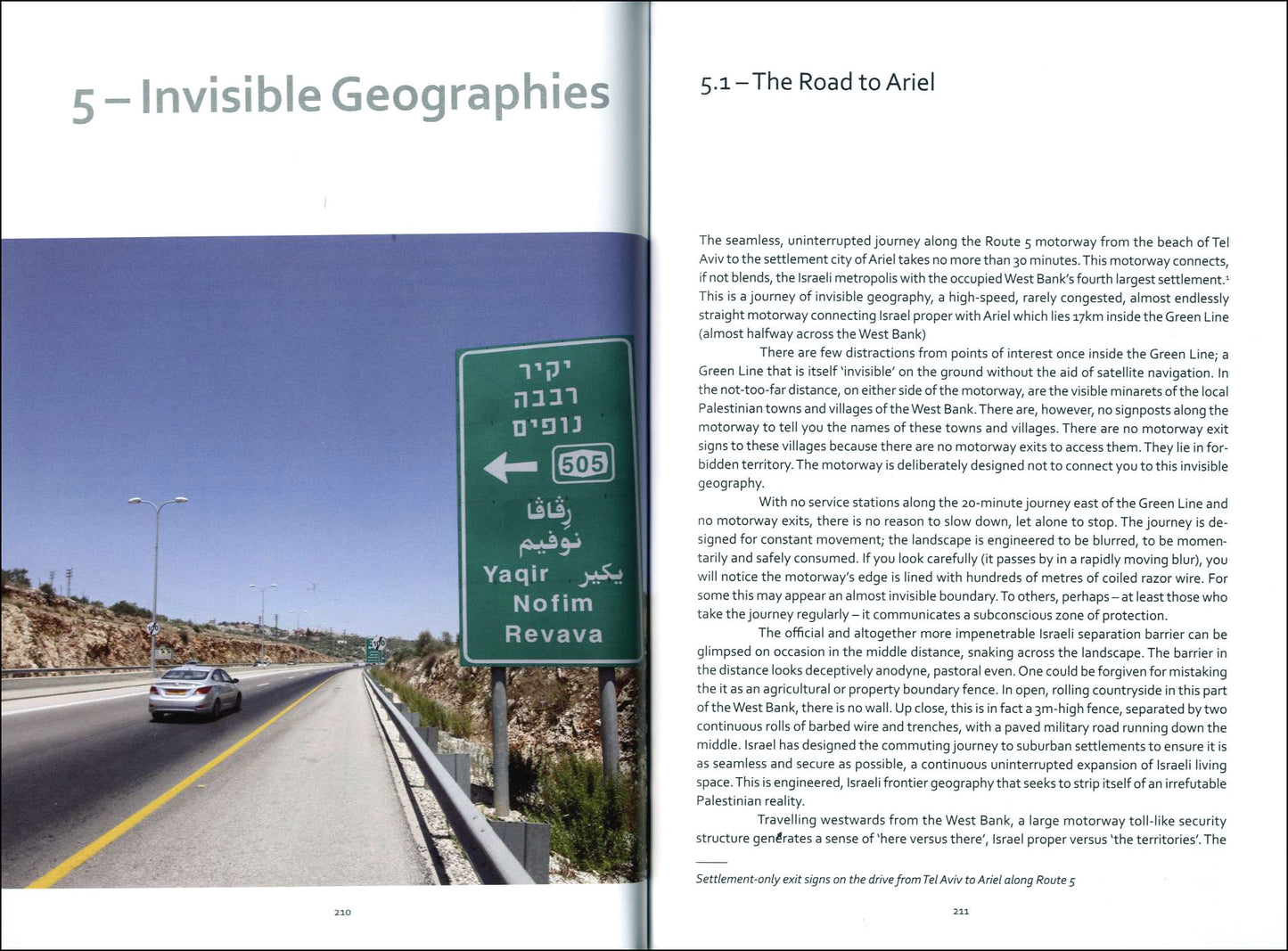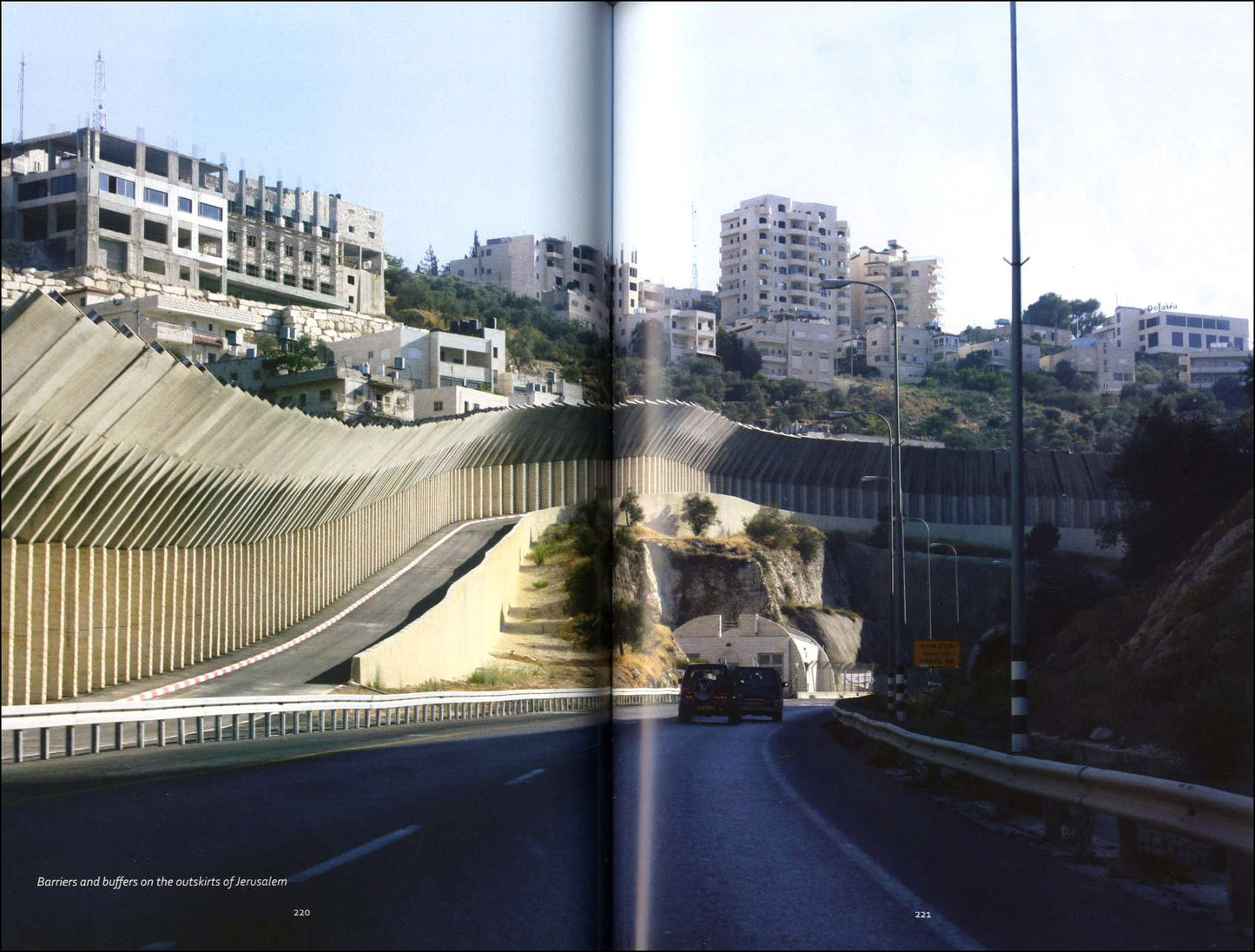Gandon
SEAMLESS NEIGHBOURHOOD – Redrawing the City of Israel
SEAMLESS NEIGHBOURHOOD – Redrawing the City of Israel
Couldn't load pickup availability
Share
by Motti Ruimy and Paul Kearns
ISBN 978 1910140 185 336 pages (pb) 24x17cm 212 illus
EXTRACT
It is a superficially simple question, but a notoriously difficult and challenging one to answer for any city: Where does your city really begin and end? Where are its borders? How many people actually live there? So where exactly is Tel Aviv? And just how big is Israel’s largest city? Where does Tel Aviv begin and end? And why is it so important to our understanding of the seamlessness of Israeli political space? Ultimately Tel Aviv is as big or small as you want it to be. Tel Aviv is both a state of mind (the ‘Bubble’) that extends no more than a few square kilometres, and a vast, seamless neighbourhood extending beyond the width of Israel proper..
A quick ‘where exactly is Tel Aviv’ Google search will instantly reveal the Wikitravel ‘fact’ that Tel Aviv is actually not Israel’s largest city after all. Somewhat prosaically, Wikitravel states Tel Aviv is the second largest city in Israel. It is on the Mediterranean coast, about 60km north-west of Jerusalem and 100km south of Haifa. Wikipedia tells us that the population of Tel Aviv is 432,892 (2015) and has an area of 52km2 (20 square miles). This is the Tel Aviv of the municipality of Tel Aviv-Yafo. Its municipal borders, like most cities, are clearly and legally defined. They are, as in most cities, somewhat illegible on the ground. This is home to the city’s tax-paying local residents and home to a very diverse and heterogeneous population. This is the Tel Aviv of Mayor Ron Huldai, mayor of the city since 1998, who successfully sought re-election in 2013 for an additional five-year term. .
For many Tel Avivians (indeed, many Israelis), ‘Real Tel Aviv’ is an altogether much smaller, socially cohesive and exclusive place. This is cliché Tel Aviv, a city happy to market itself as the Mediterranean fun-loving, laid back, hedonist Tel Aviv of the beach, leafy boulevards, restaurants, coffee shops and nightclubs. ‘Real Tel Aviv’ is also sometimes colloquially referred to as the Tel Aviv ‘Bubble’ – a much-maligned, long-overused and sorely misunderstood local moniker. The Bubble is an almost vapid two-decade-old (or more) pejorative to describe the supposed political detachment and self-delusion of Tel Aviv. The Bubble is for some a slur, for others a positive badge of civic or city local identity. For many it’s simply a hackneyed phrase that has long outlived its original meaning.
— from Chapter 1, 'Does Size Matter?'
|
CONTENTS Introduction 22 1 DOES SIZE MATTER? 32 1.1 Where is Tel Aviv? 1.2 The ‘Lie’ of the Land and the Lazy Eye of Geography 2 PICTURE TEL AVIV 52 2.1 The White City 2.2 Postcards from Tel Aviv 2.3 Mapping the ‘missing’ persons of ‘Postcards from Tel Aviv’ 2.4 508 Immutable Zonings 2.5 The Green City? 3 EXTENSIONS 100 3.1 Balcony Space 3.2 The soil of Israel and the rise of the Tel Avivian penthouse 3.3 Chasing space in the White City of Tel Aviv 3.4 Suicidal Geography 3.5 Taking Shelter Apart 3.6 Eleven and a half Rothschilds 3.7 Bnei Brak and the Architecture of Expansion 4 GREEN LINE EXURBIA 154 4.1 The Exurban Geography of Tel Aviv – Alfe Menashe 4.2 An Israeli City over the Green Line 4.3 Back Door to the Seamless Zone 4.4 Seamless Segregation and Greater Tel Aviv 4.5 The Tel Avivian Dead Sea Drive 4.6 Up the Road: the Semi-Detached City 4.7 Tram Space 5 INVISIBLE GEOGRAPHIES 210 5.1 The Road to Ariel 5.2 The Shifting Ideology of a Simple Map 5.3 Mini Israel 5.4 Invisible Geography and the Census 5.5 Constituency Geography 5.6 Butterfly State 5.7 Settling for Less 6 THE STATE OF TEL AVIV 276 6.1 Bursting the Tel Aviv ‘Bubble’ 6.2 The world’s first Jewish Global City? 7 AUTONOMY 290 7.1 The Looming Divorce:the ‘State’ of Tel Aviv and the ‘State’ of Jerusalem 7.2 The Geography of Regional Zionism Conclusion 316 Appendix 320 References 322 |
see also REDRAWING DUBLIN by Paul Kearns + Motti Ruimy














